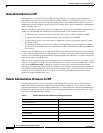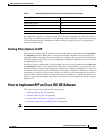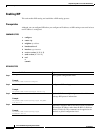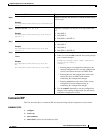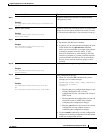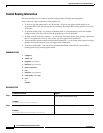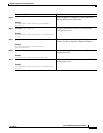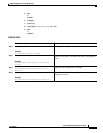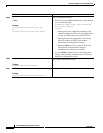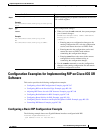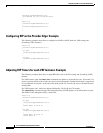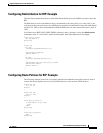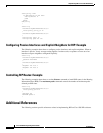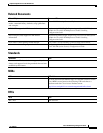
Implementing RIP on Cisco IOS XR Software
How to Implement RIP on Cisco IOS XR Software
RC-344
Cisco IOS XR Routing Configuration Guide
OL-14356-01
Creating a Route Policy for RIP
This task defines a route policy and shows how to attach it to an instance of a RIP process. Route policies
can be used to:
• Control routes sent and received
• Control which routes are redistributed
• Control origination of the default route
A route policy definition consists of the route-policy command and name argument followed by a
sequence of optional policy statements, and then closes with the end-policy command.
A route policy is not useful until it is applied to routes of a routing protocol.
SUMMARY STEPS
1. configure
2. route-policy name
3. set rip-metric number
4. end-policy
Step 8
route-policy {in | out}
Example:
RP/0/RP0/CPU0:router(config-rip-if)# route-policy
out
(Optional) Applies a routing policy to updates advertised
to or received from a RIP neighbor.
Step 9
end
or
commit
Example:
RP/0/RP0/CPU0:router(config-rip-if)# end
or
RP/0/RP0/CPU0:router(config-rip-if)# commit
Saves configuration changes.
• When you issue the end command, the system
prompts you to commit changes:
Uncommitted changes found, commit them before
exiting(yes/no/cancel)?
[cancel]:
–
Entering yes saves configuration changes to the
running configuration file, exits the
configuration session, and returns the router to
EXEC mode.
–
Entering no exits the configuration session and
returns the router to EXEC mode without
committing the configuration changes.
–
Entering cancel leaves the router in the current
configuration session without exiting or
committing the configuration changes.
• Use the commit command to save the configuration
changes to the running configuration file and remain
within the configuration session.
Command or Action Purpose



